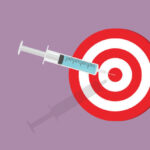Understanding the differences between remote patient monitoring (RPM) and remote therapeutic monitoring (RTM) is critical when considering remote care models. This article provides an overview comparing RPM vs RTM. We cover the technologies each uses, the data types collected, how to bill for services, and supervision and billing rules requirements. This overview will help you make informed decisions around which to leverage to expand access to care and create new revenue streams while remaining compliant with billing regulations.
What is Remote Patient Monitoring (RPM)?
To help understand the differences in RPM vs. RTM, let’s first review what remote patient monitoring is. Remote patient monitoring (RPM) differs from remote therapeutic monitoring (RPM) in that RPM focuses on physiological data while RTM focuses on non-physiological monitoring. Furthermore, remote patient monitoring enables qualified healthcare professionals to monitor vital signs outside conventional healthcare settings.
Healthcare providers equip patients with remote patient monitoring devices that are FDA-cleared for use away from the clinical setting. Remote patient monitoring devices measure physiologic data like heart rate, glucose levels, oxygen saturation, pulse rate, weight, and more. When a patient takes a vital sign measurement, that data is sent instantly to their provider. The physician can view it in their RPM dashboard.
What is Remote Therapeutic Monitoring (RTM)?
Next, to understand the differences in RPM vs. RTM, we will review what remote therapeutic monitoring is. In contrast to RPM, remote therapeutic monitoring is used to acquire non-physiological patient data. This data can monitor medication and exercise adherence, functional status, response to therapy, and musculoskeletal and respiratory activity. For example, patients with asthma or rheumatoid arthritis.
Patients use RTM devices to collect health data for musculoskeletal and respiratory system status, therapy, and medication response and adherence. Unlike RPM, the RTM patient data is self-reported and communicated to their physician. Certain medical devices are also used to administer patient care. Remote peak flow meters and spirometers are commonly used. This data is considered non-physiologic data.
RPM vs. RTM Billing
Healthcare providers can establish additional revenue streams by implementing remote patient and therapeutic monitoring. However, regulations exist regarding which codes can be billed together, and providers are not allowed to double bill for RTM and RPM.
To help, the following sections cover how to bill for RPM vs. RTM.
RPM Billing
RPM CPT codes pay for device setup, collection, interpretation, and processing of remote physiological data. The 2023 RTM CPT codes, descriptions, Payment rates, and billing frequency are listed below.
99453
This code pays for device set-up and patient education on equipment for vital sign monitoring such as blood pressure, pulse oximetry, blood glucose, respiratory flow rate, and weight. This one-time code is billed after the initial 16 days of monitoring. The average national payment rate for CPT 99453 is $19.65.
99454
Supplying the device for daily recording or programmed alert transmissions is billed under code 99454. It may be used more than once, given that the patient uses the device at least 16 days per month. Therefore, CPT 99454 can be billed every 30 days. The average national payment rate for CPT 99454 is $46.50.
99457
This payment is for the initial 20 minutes of treatment management. An unspecified portion of that 20 minutes must involve interactive remote communication with the patient. Though, it is not explicitly defined how interactions must be provided. However, video, phone, email, and text messaging would suffice. The average national payment rate for CPT 99457 is $48.14.
CPT 99457 is billed “incident to” under general supervision. In addition, medicare providers can contract third-party remote patient monitoring companies to assist with RPM services. Ultimately, healthcare organizations can manage more patients and generate more revenue without significantly impacting workflows.
99458
In 2023, CPT 99458 encompasses each additional 20 minutes of RPM services, with a maximum of 60 minutes in a calendar month. Similar to CPT 99457, documentation of how the time is distributed is required. The average national payment rate for CPT 99458 is $48.14.
99091
CPT 99091 was new in 2022 but had more requirements than the preceding codes. For example, in 2023, it covers a minimum of 30 minutes in a calendar month for the time it takes clinical staff to gather, interpret, and process data that a patient transmits. It also covers at least one communication, which occurs by phone or email, whereby medical management or monitor advising occurs. The average national payment rate for CPT 99091 is $52.71.
RTM Billing
In 2022, The Center for Medicaid and Medicare (CMS) established 5 RTM billing codes to help make billing for physical, occupational, and speech-language pathologists more accessible. Before 2022, these qualified healthcare professionals were not reimbursed for collecting data and educating patients using remote monitoring devices. The new RTM codes allow healthcare systems to increase revenue while improving patient outcomes and recovery programs.
RTM codes are general management codes that qualified healthcare professionals, like physical and occupational therapists, can use to bill for their services, unlike RPM codes. The 2024 RTM CPT codes, descriptions, payment rates, and billing frequency are listed below.
98975
This code covers initial setup and patient education on the use of equipment. It can be billed once by one practitioner only when at least 16 days of data have been collected on at least one medical device. The average national payment rate for CPT 98975 is $19.65.
98976
Billing CPT code 98976 pays for respiratory devices supplied with daily scheduled recordings and programmed alerts and transmission for monitoring the respiratory system. The code can be used every 30 days by one practitioner only when at least 16 days of data have been collected on at least one medical device. The average national payment rate for CPT code 98976 is $46.83.
98977
Code 98977 reimburses musculoskeletal devices supplied with daily scheduled recordings and programmed alerts and transmission for monitoring the musculoskeletal system. This can be billed once by one practitioner only when at least 16 days of data have been collected on at least one medical device. The average national payment rate for CPT code 98977 is $46.83.
98980
CPT 98980 bills for the initial 20 minutes of treatment time per calendar month. Time must include at least one interactive communication via phone or video with the patient during the month.
CPT 98980 can be billed “incident to” or under general supervision, which includes physicians, nurse practitioners (NPs), and physician assistants (PA). CPT 99457 is billed monthly. The average national payment rate for CPT 98980 is $49.78.
Notably, billing is not generally part of the Medicare benefit for qualified healthcare practitioners: physical therapists (PTs), occupational therapists (OTs), and speech-language pathologists (SLPs). Second, the billing qualified health care practitioner must personally furnish RTM services. Third, when the practitioner is a PT or OT, the OT or PT must supervise a therapy assistant.
98981
In 2024 CPT 98981 covers each additional 20 minutes of treatment time per calendar month. This code has the exact requirements as CPT 98980. The average national payment rate for CPT 98981 is $39.30.
Understanding RPM vs RTM
Remote patient monitoring and remote therapeutic monitoring are two distinct models for remote care, with key differences in RPM vs RTM. RPM focuses on collecting and monitoring physiological data like vital signs using FDA-cleared devices. In contrast, RTM acquires non-physiological, self-reported data on factors like medication adherence and therapy response.
Billing codes, frequencies, payment rates, and supervision rules also differ between RPM vs RTM. When looking to implement a remote care program, providers must understand these RPM vs RTM distinctions, particularly around device types, data collected, and billing protocols, in order to select the appropriate model, expand access, improve outcomes, and maximize revenue. Considering the RPM vs RTM differences outlined here will enable providers to make informed decisions between these remote care approaches.
Ready to Learn More?
Tenovi is committed to enhancing preventive patient care and simplifying the process of managing patient data for healthcare providers. Tenovi is the only platform that includes RPM devices for neuromuscular rehab. Our easy-to-use rpm devices help optimize care for patients with chronic care conditions such as heart disease, COPD, diabetes, and hypertension patients.
We hope you’ll be able to schedule a demo and consultation.






